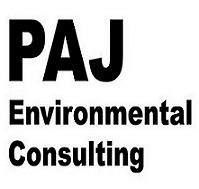
A nanometer is one billionth of a meter.
.
The science, engineering and technology conducted at usually less than 100 nanometers is collectively called nanotechnology. (Phoenix, 2003a). To compare, the thickness of a sheet of paper is approximately 100,000 nm. However, it must be realised that there is no general agreement on a definition. There are many different definitions of nanotechnology because it is comprised of many separate fields (because of the reductionist splitting of science) such as nanomedicine, nanoengineering, nanochemistry, nanophysics, nanobiotechnology, nanomaterials, and nanoelectronics.
.
Nanoscience and nanotechnology are often tightly interwoven and in this post the term nanotechnology will be used to describe both areas. Nanotechnologists are increasingly able to manipulate the building blocks of nature (such as atoms, molecules, DNA, proteins, etc).
.
The science, engineering and technology conducted at usually less than 100 nanometers is collectively called nanotechnology. (Phoenix, 2003a). To compare, the thickness of a sheet of paper is approximately 100,000 nm. However, it must be realised that there is no general agreement on a definition. There are many different definitions of nanotechnology because it is comprised of many separate fields (because of the reductionist splitting of science) such as nanomedicine, nanoengineering, nanochemistry, nanophysics, nanobiotechnology, nanomaterials, and nanoelectronics.
.
Nanoscience and nanotechnology are often tightly interwoven and in this post the term nanotechnology will be used to describe both areas. Nanotechnologists are increasingly able to manipulate the building blocks of nature (such as atoms, molecules, DNA, proteins, etc).
.
Scientists can take advantage of the sometimes very novel properties of materials that operate only at the nano-scale; however these novel properties may also be the cause of new serious problems. Nanotechnology has only recently being included in university studies. Furthermore, there are a number of research scientists employed within private industries ( majority of nano-scientists however work within private companies (e.g. Hewlett-Packard). Historically universities developed in a privileged position and were seen as the gatekeepers of knowledge. However, increasingly business and science is becoming inextricably linked.
.
The area of nanotechnology is highly dynamic and new nanofields and applications are starting to appear around the world. Nanotechnology can be divided into near-term nanotechnology (i.e. new science and technology that takes advantage of the properties operating at the nanoscale) and far-term or molecular nanotechnology (i.e. aims to build from the bottom-up with atomic precision). The rapid pace of new discoveries means that we may soon have the ability to build with atomic precision, although how quickly this occurs is unknown; it may be anywhere from 5 to 25 years away.
.
The capabilities of nanotechnology are already significant and its power will continue to grow rapidly. Of critical concern is that power can be used for ‘good’ or ‘bad’ purposes, for example, some experts say that existing nanotechnology techniques designed to deliver medicines in a more effective and targeted fashion could also be used to deliver toxic substances into a person's system.
Scientists can take advantage of the sometimes very novel properties of materials that operate only at the nano-scale; however these novel properties may also be the cause of new serious problems. Nanotechnology has only recently being included in university studies. Furthermore, there are a number of research scientists employed within private industries ( majority of nano-scientists however work within private companies (e.g. Hewlett-Packard). Historically universities developed in a privileged position and were seen as the gatekeepers of knowledge. However, increasingly business and science is becoming inextricably linked.
.
The area of nanotechnology is highly dynamic and new nanofields and applications are starting to appear around the world. Nanotechnology can be divided into near-term nanotechnology (i.e. new science and technology that takes advantage of the properties operating at the nanoscale) and far-term or molecular nanotechnology (i.e. aims to build from the bottom-up with atomic precision). The rapid pace of new discoveries means that we may soon have the ability to build with atomic precision, although how quickly this occurs is unknown; it may be anywhere from 5 to 25 years away.
.
The capabilities of nanotechnology are already significant and its power will continue to grow rapidly. Of critical concern is that power can be used for ‘good’ or ‘bad’ purposes, for example, some experts say that existing nanotechnology techniques designed to deliver medicines in a more effective and targeted fashion could also be used to deliver toxic substances into a person's system.
.
by Random Man (2008)
.
.
So please, tell us what you think of nanoscience and nanotechnology.
.
**If you enjoyed this post please also check out:
What is nanotechnology?
.
History of Nanotechnology
.
Nanotechnology - risks and benefits
Nanotechnology and Climate Change
COMMENTS ALWAYS WELCOME !!.
So please, tell us what you think of nanoscience and nanotechnology.


No comments:
Post a Comment